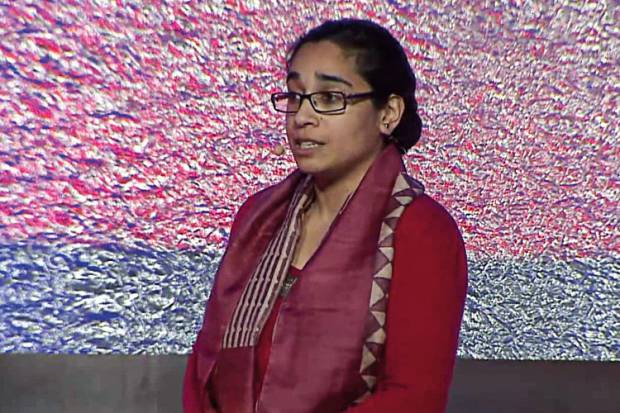How to be a better teacher: ‘madness’ and media mash-ups
An award-winning lecturer at the London School of Economics explains why unsettling her master’s students is a valuable tactic
“I’m a bit of a mad teacher. I’m always welcoming the bizarre, the creative, the extraordinary into the classroom. I’m a huge fan of the unusual.”
This is perhaps not the first thing an academic might admit to in an interview, but for Shakuntala Banaji, lecturer and programme director of the MSc in media, communication and development at the London School of Economics, it is a crucial aspect of her teaching methods, which have recently won her the annual European Award for Excellence in Teaching in the Social Sciences and Humanities, awarded by the Central European University. In a marketised sector, Dr Banaji said, she understood the notion of “knowledge as instrumental – what’s going to get me a job, what do I need to pass an exam – versus knowledge that is a life skill, that will inspire you; knowledge that’s humane”.
“I’m very respectful of the way financial and economic pressures are pushing [students] and their families to think in instrumental ways about knowledge,” she said. “[But] I’m giving them a skill, through the way in which I run seminars, showing them that they can learn, even when people are holding very differing views, to communicate with each other.”
Given the breadth and interdisciplinarity of the social sciences and humanities, and the strong international make-up of her master’s students, Dr Banaji strives to ensure that the content relates to everyone.
“I am constantly contextualising everything,” she said. “You always see yourself as somehow translating – not just [language] but…cultural issues, historical ones.
“How do you make someone interested in an event? How do you translate a desire for humanity? For some people, it may sound simplistic; they think that by the time they’ve lectured for 20 years they can use words without translating because they’ve earned that right. With every cohort of new students, you need to earn that right again.”
She added: “Take simple academic words like ‘discourse’ or ‘text’. They mean so many different things to different people. People from gender studies understand the body as a text, film students think of the film as a text, and then you’ve got the literature student who’s never thought of a film or a body as a text!”
Dr Banaji said that her approach was to “denaturalise” the students’ subject knowledge by “democratising the canon and then deconstructing it”. Those who thought they knew it all are “completely unsettled” and have to learn something new; and those who thought that they knew nothing are emboldened, she added. Unsettling the students and interspersing her teaching with different kinds of media ensures that Dr Banaji holds the students’ attention and keeps them interested.
Using lots of visual material is part of this, and she chooses images carefully to “help students think through things in different ways”.
“It’s exhausting for them to listen to a lecturer for an hour. Having something that visually represents what has just been said, in a different way, is very helpful and exciting.”
[email protected]
Article originally published as: There’s method in this madness (28 May 2015)